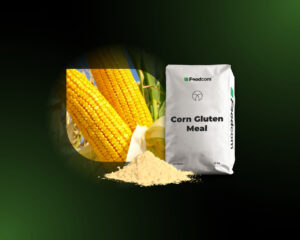- Rising demand and prices for potato proteins and corn gluten in animal feed indicate market shifts.
- The increasing popularity of tapioca starch in the food industry reflects changing preferences and demand.
- A stable sugar market with rising demand for dextrose illustrates the versatility of sweeteners and the dynamics of the market.
Hello partners,
Are you ready for the freshest news from Plant-based Industry?
Welcome to our latest newsletter, which provides you with insights into trends and challenges in the plant-based market. This issue focuses on the increasing interest in potato proteins and corn gluten meal, as well as the growing demand for feed grade proteins and starches due to the seasonal animal cycle. We also discuss the increasing demand for starch, the market outlook for sugar and the dynamics in the wheat market. We invite you to explore these important topics with us.
Products of the Week
Proteins
The animal feed market has seen a significant increase in demand for feed-grade products, heralding the arrival of spring and the anticipation of young animals to replenish herd sizes diminished in the previous year. Interest in animal nutrition has particularly spiked for potato proteins and vital wheat gluten, with both experiencing heightened demand and nearing complete sell-out status. Potato protein producers, anticipating a price drop, sold their entire production last fall, a move that backfired as prices remained stable and stock quickly depleted. Similarly, vital wheat gluten distributors, expecting a downturn, offloaded their inventory during the winter only to encounter severe shortages as demand unexpectedly surged.
Initial forecasts predicting a decline in prices late last year have been proven incorrect. Instead, the market is witnessing an upward trend in prices, driven by strong demand in the animal feed sector. This surge is further emphasized by the limited availability of key inputs like potato seed, compounding the challenges facing the market.
A similar dynamic can be observed with corn gluten meal, which continues to enjoy steady interest in the aquafeed, petfood, and poultry feed industries. Its exclusive use as a feed additive underlines the stability of this product on the market. Pea protein as a feed additive is also becoming increasingly popular thanks to its natural properties and benefits. Its digestibility and amino acid profile make pea protein an economically advantageous choice for feed manufacturers.
Starches
In the feed market, starches, especially those made from potatoes and peas, are in growing demand. Market activity and increased transactions testify to the market’s dynamic response, as evidenced by the continued increase in demand for potato starch while potatoes are in short supply.
Tapioca starch, especially modified tapioca starch, was not initially of interest to producers. However, it is becoming increasingly popular in the food industry, highlighting its previously unexplored potential. The increasing use of tapioca starch in food underlines the changing market preferences and increases the interest in its innovative applications that open up new perspectives.
Sweeteners
The sugar market is currently experiencing price stability, reflecting a balance between supply and demand. In the animal feed sector, GMP+ certified sugar is of particular interest, indicating its growing role in animal feed production. At the same time, demand for dextrose is increasing significantly, which is due to its wide use in many industries and confirms its important position in the market.
Wheat
The dynamics on the wheat market are volatile. Chinese importers have canceled or delayed around one million metric tons of Australian wheat due to a global oversupply, leading to the lowest wheat prices in over three years. This follows a similar reduction in U.S. wheat exports to China. The market downturn is largely due to increased production from Russia, causing a shift in global trading patterns. These cancellations have had a ripple effect, freeing up shipping slots and impacting global wheat trade dynamics.
What else?
ECOWAS officials discussed challenges in meeting West African palm oil demand, emphasizing the need for increased production and the removal of trade tariffs under the ECOWAS Trade Liberalization Scheme. The discussion aimed at addressing production shortfalls and origin-related disputes in the sector, with a focus on leveraging Nigeria’s potential to boost output and facilitating regional collaboration among key palm oil-producing countries.
Cocoa processors in Côte d’Ivoire and Ghana are forced to stop or reduce their production due to high bean prices, exacerbating the global chocolate crisis. The high cocoa prices, which are the result of several years of poor harvests in these leading producing countries, are making it difficult for processors to buy raw materials and disrupting the production of ingredients needed to make chocolate. This situation has led to an imbalance between supply and demand. The International Cocoa Organization is forecasting a significant market deficit and the lowest global cocoa stocks in 45 years, resulting in higher chocolate prices for consumers.
Differences in Brazilian soybean yield estimates between the USDA and Brazil’s Conab are widening, reflecting the impact of problematic weather for the 2023-24 season. Similar concerns apply to the Brazilian corn crop, especially given the potentially unfavorable conditions in a key growing region. The discrepancy in corn forecasts between the two agencies is the widest in years, and the latest weather models point to a very dry March that could impact production.








